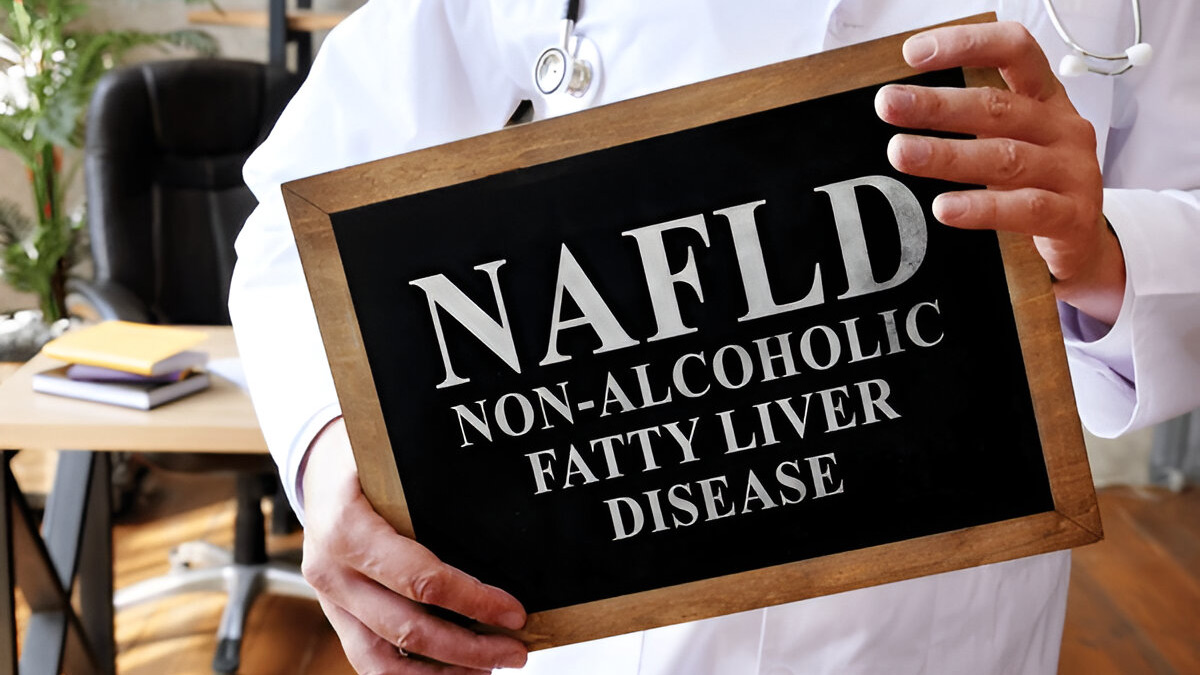
A generation raised on packaged snacks, sweetened beverages, and hurried meals is now showing the first signs of a condition once seen mainly in adults:Non-Alcoholic Fatty Liver Disease (NAFLD). The liver stores fat when calorie intake, especially from added sugars and refined carbohydrates, chronically outstrips energy use. In adolescents, this process can begin quietly and progress without symptoms, yet it carries risks for insulin resistance, dyslipidaemia, and future cardiovascular disease.
Table of Content:-
We spoke to Dr Pavan Reddy Thondapu, HOD - Medical Gastroenterology, Arete Hospitals, Hyderabad, who explained this connection and how to combat it.
“Teen bodies undergo hormonal and metabolic changes simultaneously. Lifestyle patterns, such as high consumption of Sugar-Sweetened Beverages (SSBs), frequent fast food intake, and low physical activity, create a metabolic environment that favours liver fat accumulation,” said Dr Thodapu.
Across studies, NAFLD prevalence in children and adolescents is markedly higher among those who are overweight or obese, with pooled estimates indicating a general-population prevalence in the low teens and rates approaching half in obese cohorts. These figures suggest that NAFLD is no longer rare in youth and warrants attention from both parents and clinicians.
Soft Drinks, Fructose, and the Liver

Liquid sugar is particularly harmful because beverages deliver large doses of fructose and glucose with little satiety. “Fructose is processed preferentially by the liver and drives de novo lipogenesis (the conversion of simple sugars into fat) more potently than other carbohydrates. Repeated exposure to high-fructose drinks raises hepatic fat stores and inflammation in experimental models and human cohorts, making soft drinks a leading dietary suspect in early NAFLD,” explained Dr Thodapu.
Public-health data show substantial daily consumption of carbonated and sweetened drinks among school-age children, reinforcing the link between beverage habits and rising liver fat.
Also Read: Is Your Liver in Trouble at Night? Doctor Explains Red Flags of Fatty Liver You Shouldn’t Ignore
How Early is NAFLD Detected?

NAFLD in adolescents is often discovered incidentally, on routine blood work that shows Elevated Alanine Aminotransferase (ALT) or on imaging performed for other reasons. Ultrasound remains a common first-line test for steatosis, but has limits: it detects moderate to severe fat reliably, but misses mild cases.
“Transient elastography (FibroScan) and Controlled Attenuation Parameter (CAP) add sensitivity for quantifying steatosis and assessing fibrosis and are increasingly used in specialty clinics. Targeted screening (for example, ALT measurement) is recommended in children who are overweight or obese or who have additional metabolic risk factors, starting in mid-childhood,” added Dr Thodapu.
What the Evidence Says About Treatment
No single pill reverses paediatric NAFLD; the cornerstone of management is sustained lifestyle change. The paediatric society guideline (NASPGHAN) explicitly recommends lifestyle modification as first-line therapy and states that no medication or supplement is currently recommended for most children with NAFLD; vitamin E shows limited histologic benefit only in a subset with biopsy-proven NASH, while metformin hasn’t helped liver outcomes.
Trials and practice guidelines emphasise weight stabilisation or modest weight loss, reduction of added sugars (especially SSBs), improved dietary quality, and increased physical activity as effective first-line measures. In a randomised clinical trial of adolescent boys with NAFLD, an 8-week low-free sugar diet (including removal of added sugars and fruit juices) led to a ~31% average reduction in liver fat on MRI-PDFF, plus improved inflammation markers, versus a usual diet.
Intervention studies that specifically cut sugar intake, particularly fructose, have shown declines in liver fat over weeks to months, supporting beverage reduction as a practical target for families.
Also Read: Fatty Liver And PCOS: The Hidden Hormonal And Metabolic Link That You Should Know
Practical Steps for Families
- Reduce or eliminate sugar-sweetened beverages: water, plain milk, or diluted fruit juice are safer alternatives.
- Read labels: Many packaged drinks carry high fructose corn syrup or large sugar counts per serving.
- Healthy eating: Replace a handful of processed snacks with whole-food options (fruit, nuts, yoghurt). Prioritise regular physical activity; both aerobic and resistance exercises help lower liver fat independent of weight loss.
If a teen is overweight, has persistently elevated ALT, or shows metabolic risk factors (high triglycerides, low HDL, impaired glucose tolerance), arrange an evaluation with a gastroenterologist for targeted testing and follow-up.
Bottomline
Dr Thodapu concluded, “Early NAFLD in adolescents is a preventable and, in many cases, reversible condition when identified and managed promptly. The ubiquity of sugary drinks and processed snacks makes the problem common but also straightforward to address. Small, sustained changes at home—fewer soft drinks, smarter snack swaps and more movement, can reduce liver fat, protect metabolic health and lower the chance that a silent childhood problem becomes an adult disease.”
[Disclaimer: This article contains information provided by an expert and is for informational purposes only. Hence, we advise you to consult your professional if you are dealing with any health issue to avoid complications.]
Also watch this video
How we keep this article up to date:
We work with experts and keep a close eye on the latest in health and wellness. Whenever there is a new research or helpful information, we update our articles with accurate and useful advice.
Current Version
